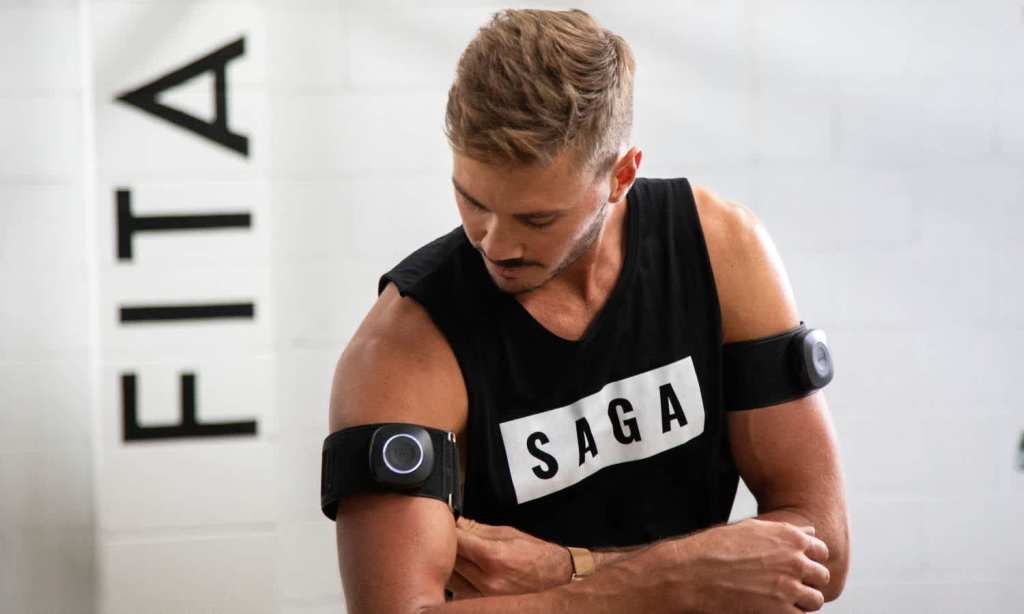Fitness tech is one trend that just doesn’t seem to be slowing down. From Peloton to the Vitruvian V-Form, and now to The BFR Cuffs from Saga Fitness. And if you’re wondering what that acronym stands for, its Blood Flow Restriction.
And if you’re wondering what that is all about, well, the name does kind of give it away up front. Essentially, it’s a training method. According to one study, it involves “partially restricting arterial inflow and fully restriction venous outflow in working musculature during exercise”. It’s been around since the 1960s; Dr Yoshiaki Sato originated the method, known as “kaatsu training”. You might know it as tourniquet training.
The American Journal of Sports Medicine found that BFR can indeed “lead to improvements in strength, muscle size, and markers of sports performance in healthy athletes”. In addition to this, it was revealed that “combining traditional resistance training with BFR may allow athletes to maximize athletic performance and remain in good health.”
The Latch spoke to the general manager of Saga Fitness, Erin Kearney — who has over seven years of experience in sports tech — about everything BFR.
What is blood flow restriction training?
Kearney informs us that there’s yet another name for BFR — occlusion training. It involves placing a band or tourniquet around the proximal limb while performing low-intensity exercise — reducing blood flow from the working muscle. And if you’re wondering what proximal limbs are? Upper leg, upper arm — near your groin and underarm.
So what does this actually do? According to Kearney, it creates an “oxygen mismatch in the working muscle [the arm or leg] which accelerates type II muscle fibres and the release of growth hormones.” The result: Increased muscle size and strength.
As for what separates BFR from regular training? That it’s achieved quickly, and by using lighter weights.
How do the BFR Cuffs work?
Here’s the tech side of it. These cuffs are “equipped with personalised pressure sensors, controlled and inflated wirelessly via a smart app”. And they inflate to your personalised occlusion zone; any guesswork is removed. Simple, accessible.
They’re also sweat-resistant, with a quick-release velcro strap.
What are the benefits of BFR?
As previously mentioned — gains for days. But in reality, Kearney explains that its a “great alternative” for people who might experience joint pain, or are unable to use heavy weights during exercise. “This is because BFR can still increase muscle size and strength, without requiring heavy loads that put stress on the body.”
In addition to this, Kearney tells us that recovery periods are shortened when training with BFR as “the muscle isn’t s fatigued as it would be from training with heavy weights and high mechanical stress”.
Are there any side effects of BFR?
“The degree of risk is no different than commencing a weight or fitness program,” Kearney states.
Due to the fact that BFR only reduces the venous return (blood returning from muscle to heart), this cause blood flow to slow, not stop and pool. This then creates a metabolic accumulate that triggers hormone production, explains Kearey, saying “None of this, as validated by science, is unsafe.”
Kearney does acknowledge that the biggest risk comes from either improper application of the cuffs or the wrong type of cuff being used. She cites that a common mistake is the cuff being positioned too low on the limb, too close to elbow or knee joints. Manual straps, or elastic bands, can increase the risk of bruising, muscle tissue damage or, in some rare cases “cut off circulation completely”.
How can I incorporate it into my workout?
If you’re familiar with resistance or strength training, then “blood flow restriction would be a great addition for you,” says Kearney. As for exactly how? Well, research does recommend using a lighter load when performing BFR — like 20% of your one-repetition max.
“You would then complete the BFR Workout, which is 30-15-15-15 repetitions. this protocol is used to quickly build up metabolic accumulate and fatigue the muscle.” Be aware, there may be a slight burning sensation in the muscle (if you’ve done HIIT, you know the one).
“We won’t put it lightly — BFR can be tough and if-not, slightly uncomfortable, therefore it may not be for the faint-hearted trainer.”







